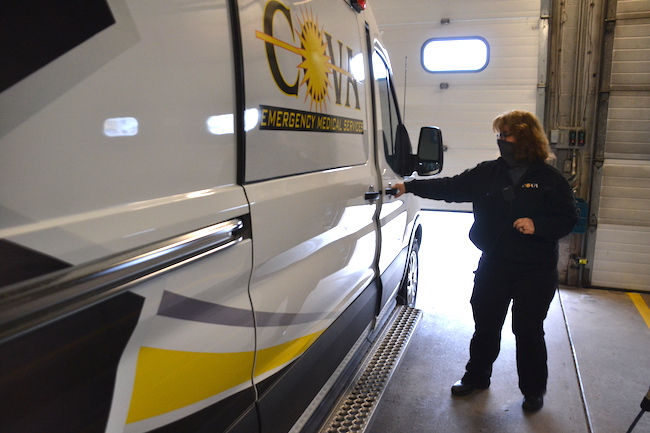COVA, facing budget deficit, seeks community, municipal support
Organization has provided emergency medical services since 1979
ALBION – COVA Emergency Medical Services is reaching out to the community and local government leaders, raising concern about budget shortfalls for the organization.
COVA responds to about 2,000 calls annually, mostly in the central Orleans towns of Albion, Barre, Carlton and Gaines.
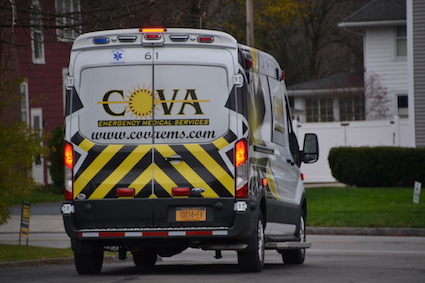
COVA’s new ambulance heads out for a call last week. The scaled-down vehicle cost $80,000 and replaced an ambulance from 2013 with 200,000 miles.
The organization operated on a $1,093,578 budget in 2019, but the revenue came in at $1,042,964, a $50,614 difference. That has been the trend the past three years – about a $50,000 budget deficit.
This year is shaping up to be worse. COVA’s call volume was down early in the Covid-19 pandemic, which hurt revenue. COVA also is spending more for PPE for staff and for disinfecting the ambulance after each call.
The organization continues to face other challenges with low reimbursement rates through Medicaid and Medicare.
Medicaid pays about 20 percent of the COVA bill and the Medicare rate is about 32 percent. Those are an increasing number of the COVA calls, said Laurie Schwab, COVA’s chief operating officer and paramedic.
The Medicaid calls include responses to the two state prisons in Albion. Those calls not only are at a low payment, but they tend to be time-consuming because of the time needed to be processed into the prison and for an inmate to meet the COVA staff for care and transport.
Private health insurance pays more compared to Medicaid and Medicare, but the checks from private insurance are made out to patients. They should then write their own check to COVA but many just keep the money from the insurance companies.
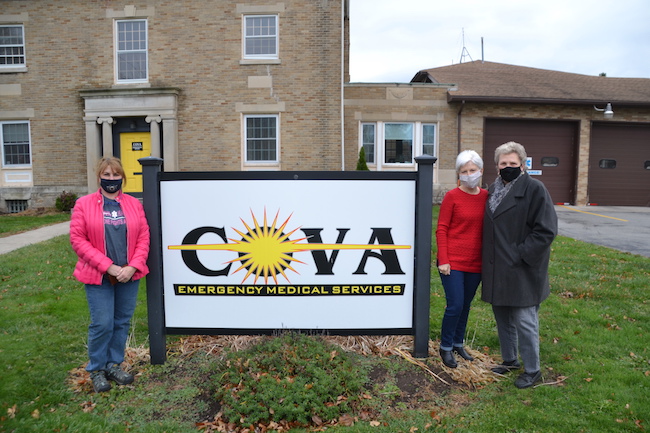
This trio is committed to COVA. They include, from left: Jennifer Stilwell, a volunteer EMT; Anna Tower, chief financial officer; and Wendy Kelly, an administrative assistant. COVA is located at 239 South Main St. in Albion.
COVA loses about $50,000 to $70,000 in “kept checks” annually, Schwab said. COVA and other ambulance providers have pressed state legislators to pass legislation, requiring the funds to be turned over to the ambulance companies or to have the insurance companies pay the ambulance providers directly.
The “kept checks” typically range from $1,000 to $2,500. If people turned those funds back to COVA the organization’s budget woes would be solved.
“It creates a financial hardship for COVA,” Schwab said.
COVA officials have met with local town and village leaders in recent months to discuss the deficits and how to keep COVA viable. COVA believes municipal support is needed. They are seeking $100,000 annually to be divvied up among the four towns – Albion, Barre, Carlton and Gaines, and possibly the village. The contributions from each municipality would be based on COVA’s call volume in each municipality.
In 2019, the call breakdown by municipality included 1,030 calls in the village, 542 in the Town of Albion, 211 in Carlton, 159 in Gaines and 110 in Barre. There were also 25 mutual aid calls.
COVA used to be able to set aside 10 percent of its income towards a new ambulance. The organization last month welcomed a new ambulance to its fleet of three ambulances. The new one replaced an ambulance from 2013 with about 200,000 miles.
The new one is a scaled down model that cost $80,000. It will be better on gas mileage with less maintenance costs.
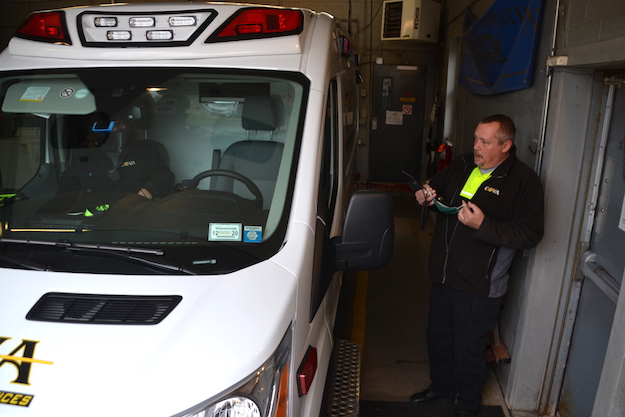
Chris Atwell, a COVA EMT, gets his masks on and heads out for a call last week. COVA responds to about 2,000 calls a year.
The organization was staffed with volunteers when it started in 1979 but has shifted to mostly a paid staff. There are 13 full-time employees, 16 part-timers and three volunteers. COVA tries to have four on duty during the daytime hours and two on the night shift.
Anna Tower is one of the volunteers. She used to be paid as the chief financial officer but decided to volunteer in the role due to COVA’s fiscal challenges.
“It’s my passion,” she said about COVA.
But she is worried about the numbers. COVA needs more revenue to continue long-term in the community.
Jennifer Stilwell also is a volunteer EMT and member of COVA’s board of directors. If there wasn’t COVA, the central Orleans towns would have to put the ambulance services out for contract, with an out-of-community provider perhaps stepping in.
Stilwell said that could lead to longer response times and unfamiliar faces responding to calls.
“It’s nice to have a community-based ambulance,” she said. “There’s connections with the staff. It’s comforting for the residents to know the people who care for you.”
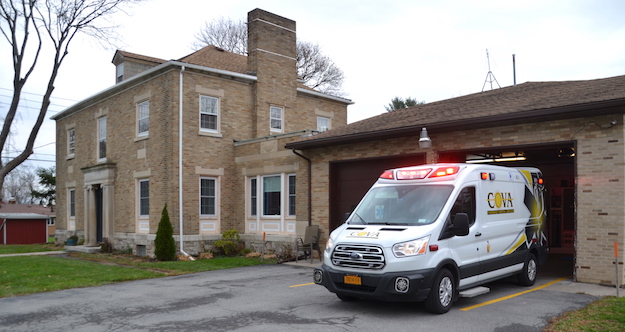
One of COVA’s three ambulances leaves the Albion base for a call last week.


























